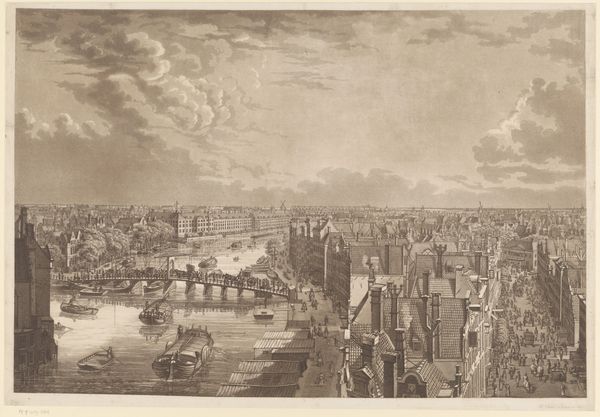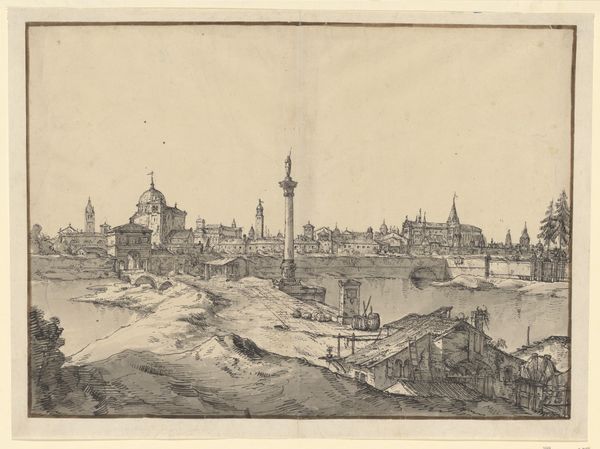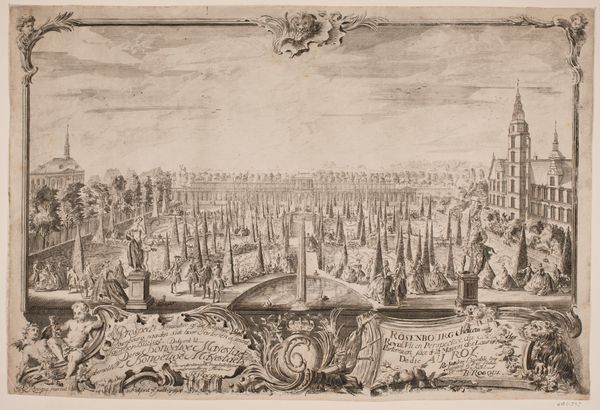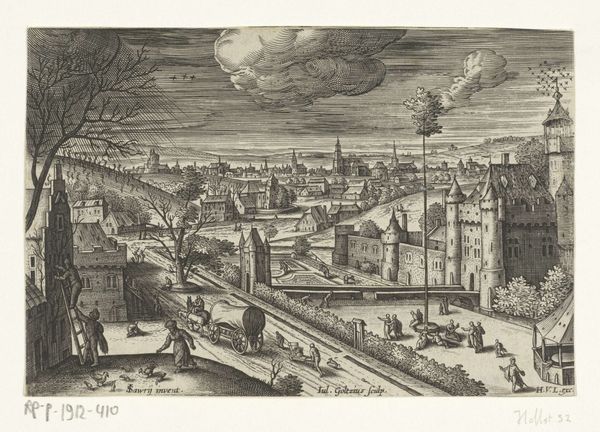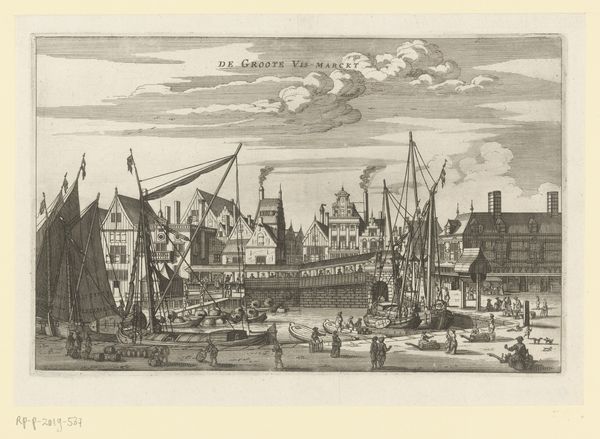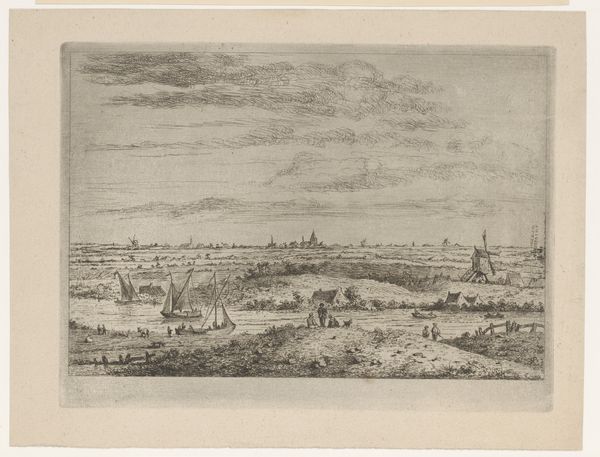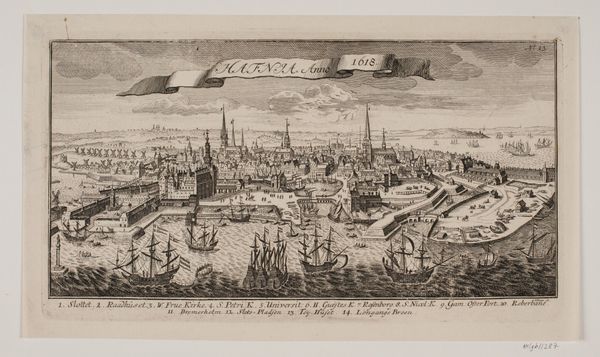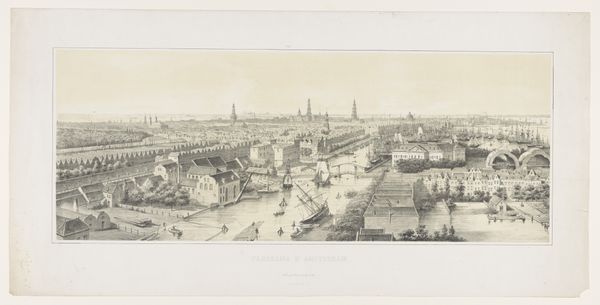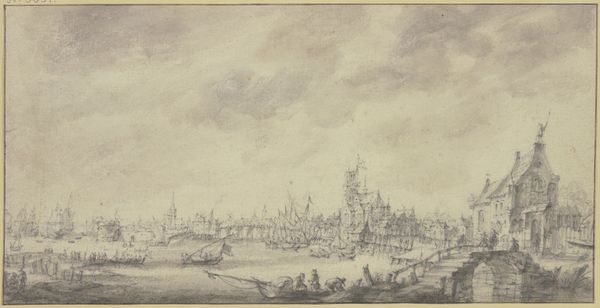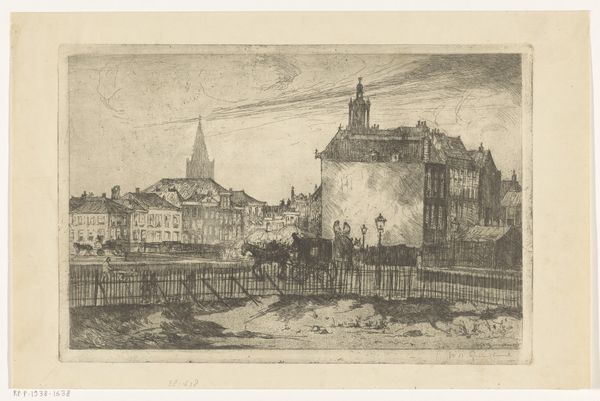
print, etching
#
dutch-golden-age
# print
#
etching
#
landscape
#
cityscape
Dimensions: height 427 mm, width 564 mm
Copyright: Rijks Museum: Open Domain
Editor: So, this is "View of Middelburg (third part)" by François Schillemans, created sometime between 1616 and 1679. It's a Dutch Golden Age etching, a cityscape showing the harbor and city. It strikes me as incredibly detailed; almost overwhelming! What stands out to you when you look at this piece? Curator: The etching medium lends a graphic clarity that invites us to delve into the layered meanings here. Consider the sheer density of ships. What do they signify beyond mere transportation? Think of them as symbols of ambition, exploration, and the projection of power and influence on a global scale. Middelburg was a key hub of the Dutch East India Company; that informs the images chosen and how they are deployed. Editor: So the ships aren't just ships, they represent something larger? Curator: Precisely. Visual symbols like ships, windmills, and church towers communicate collective beliefs, historical events, and shared ideals of the Dutch Golden Age. For example, windmills represent a mastery of nature, and churches refer to faith and order. Each element resonates with established cultural values and ideals, giving the image depth. Do you notice any emotional effect from these images? Editor: I guess there’s a confidence or optimism. Middelburg is portrayed as this bustling center, ready to take on the world. I hadn’t really considered all the different layers of meaning before! Curator: And by decoding them, we discover more about this historic society and what its inhabitants hoped to achieve. Cultural memory is a powerful current indeed! Editor: I’ll certainly be looking at landscapes with a fresh perspective from now on!
Comments
No comments
Be the first to comment and join the conversation on the ultimate creative platform.

